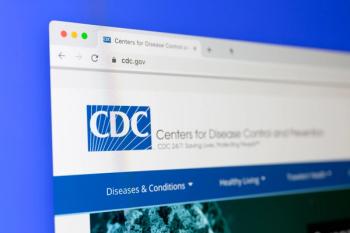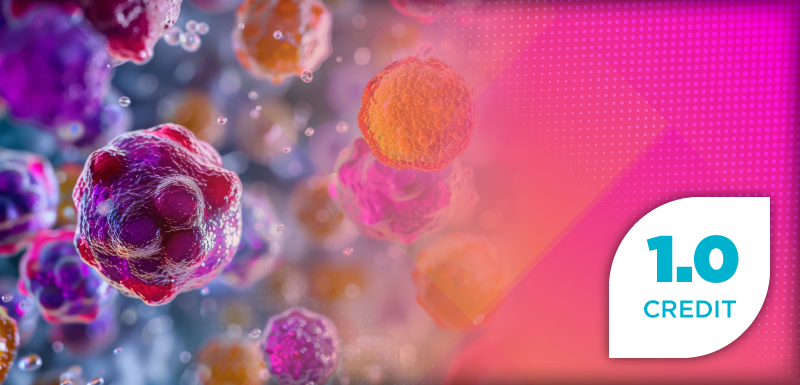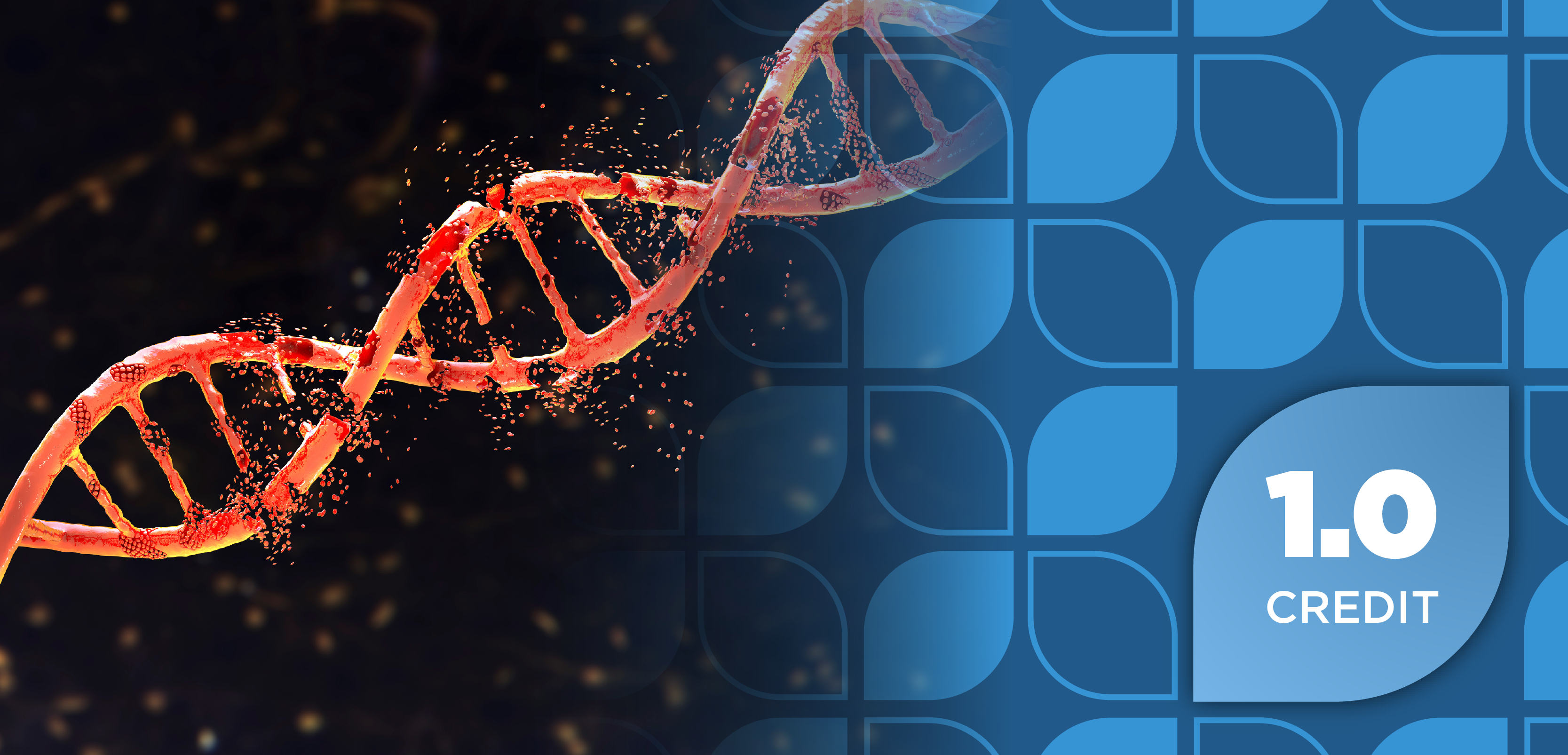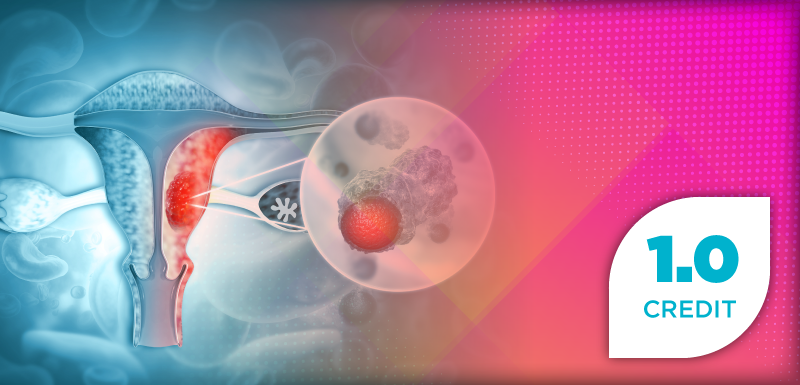Précis
Fat-soluble vitamins support key body functions, but excess intake can cause toxicity. Health care professionals play a vital role in preventing overdose and ensuring safe use.
Abstract
To maintain optimal health, the body requires specific amounts and types of vitamins. Vitamins A, D, E, and K are known as fat-soluble vitamins because they are easily soluble in lipids or oils. Vitamins play a crucial role in supporting bodily functions and processes. They ensure smooth functioning, and maintaining their optimal balance is vital, as they can influence each other’s levels in the blood and tissues. Fat-soluble vitamins are critical for maintaining optimal functioning of the immune system, cardiovascular system, muscle health, neural health, clotting, and eye health. Despite their importance in maintaining essential physiological functions, it is important to note that excessive consumption of these vitamins can lead to several adverse effects. Hypervitaminosis, also known as vitamin toxicity, especially of vitamins A and E, can be dangerous even in healthy individuals. This review provides brief descriptions of the key attributes of the 4 fat-soluble vitamins, highlighting their functions, dietary sources, mechanistic perspectives, and potential toxicity, and includes relevant case reports to further illustrate the clinical manifestations of vitamin toxicity. Several studies have examined toxicological risks linked to excessive supplementation of vitamins and conclude by proposing strategies to avert overdosing incidents, with a particular emphasis on the importance of health care professionals in enhancing clinical outcomes.
Introduction
Vitamins A, D, E, and K are mainly soluble in lipids or oils, hence why they are known as fat-soluble vitamins. Their molecular structures are similar to those of the partially cyclized isoprenoid polymers. Because these vitamins are lipophilic in nature, they are mostly absorbed and transported by lipids in the gastrointestinal tract, stored in the liver and adipose tissue, and gradually excreted from the body. Due to the delayed clearance rate, high consumption of fat-soluble vitamins can lead to their accumulation within the body, a condition known as hypervitaminosis.1 The American Association of Poison Control Centers’ Toxic Exposure Surveillance System has reported vitamin exposure in its top 25 category list in adult, pediatric, and pregnant populations year after year.1,2
Overview of Fat-Soluble Vitamins
Vitamin A
Retinol and its associated compounds that display retinol’s biological properties are referred to as vitamin A. Food sources of vitamin A include β-carotene, which is found in dark green vegetables including spinach and broccoli; and retinol, from milk, butter, cheese, kidney, and cod liver oil.2 Animal-derived products, such as liver, glandular beef, fish liver oils, egg yolks, and processed fortified food items, such as cereals, sauces, and fats, are the main sources of preformed vitamin A.
The 3 major forms of vitamin A are retinol, retinal, and retinoic acid, whereas retinyl palmitate is one of the predominant forms stored in the liver (Figure 1).3 Retinoic acid is necessary for the growth and differentiation processes of embryonic stem cells along with the maintenance of the structure and regulation of the functional activities of epithelial cells.4 An important distinction to make is that retinol is converted into retinoic acid, which can then affect genes that influence embryonic development and other cellular metabolic functions.5 Through a complex network of binding proteins and nuclear receptors, retinoic acid initiates downstream pathways that influence metabolic regulations.6
Vitamin A plays a crucial role in human vision through its involvement in the visual cycle, particularly in the retina. The active form of vitamin A in vision is 11-cis-retinal, a derivative of retinol. This molecule binds to opsin proteins in photoreceptor cells to form visual pigments such as rhodopsin in rods and photopsins in cones. Upon absorbing light, 11-cis-retinal isomerizes to all-trans-retinal, triggering a cascade of events that lead to visual signal transduction. The all-trans-retinal is then recycled back to 11-cis-retinal through a series of enzymatic reactions known as the visual cycle. Disruptions in this cycle can impair vision and lead to retinal diseases.7
Mechanisms of Vitamin A Toxicity
The excessive use of vitamin A, particularly through vitamin supplementation, leads to vitamin A toxicity. Vitamin A toxicity may cause symptoms such as headaches, nausea, vomiting, alopecia, dizziness, blurred vision, and dry eyes and skin.8-10 Additionally, the use of products containing retinoic acid for topical application can also lead to toxicity. The most observed adverse effects (AEs) from excessive topical use of retinoic acids are peeling of the skin of the palms and soles as well as erythema. Chronic vitamin A toxicity can also cause dryness of mucous membranes.10 Biotransformation of Vitamin A (ingested as retinyl esters and/or carotenoids) forms 2 active compounds such as 11-cis-retinal, which is important for vision, and all-trans-retinoic acid, which predominantly mediates many biological functions in the body (Figure 1). Although serum retinol does not mirror vitamin A status in patients with clinical or subclinical toxicity, serum retinyl esters can be proposed as alternative biomarkers of chronic hypervitaminosis A. However, their clinical utility may be limited, as these measurements are not routinely available in standard clinical laboratories.
Excessive intake of carotene-rich foods like tomatoes and mangoes, or high doses of β-carotene supplements, can lead to the accumulation and deposition of carotenoids in the palms and soles. This condition, referred to as hypercarotenemia, is marked by skin discoloration that usually presents as a yellow-orange hue. When the body has sufficient vitamin A, excess carotenoids are not converted into retinol. Although this mechanism helps prevent vitamin A toxicity, it results in the development of hypercarotenemia.
Young children and infants are particularly vulnerable to toxicity due to their smaller body size and reduced tolerance to high doses.11 As a result, hypervitaminosis in children develops and resolves quickly. Although toxicity appears in adults after consumption of over 500 mg/d, it appears in children after consumption of over 100 mg/d. Additional AEs include fissuring of the lips, hypercalcemia, and decreased bone density.12 High dosages of vitamin supplements can also put pregnant women at higher risk of toxicity. Vitamin A poisoning is more common in populations that primarily rely on liver-based foods high in this vitamin (eg, chicken and polar bear liver). However, there are only a few documented cases of this phenomenon in the literature, so it is not considered a serious public health concern.13,14
In addition to atypical symptoms such as cheilosis, exophthalmos, coarse hair, and receding eyebrows, a patient presented with liver disease of indeterminate etiology. Upon further inquiry, long-term use of high-dose vitamin A, averaging 120 mg/d for 8 years, was reported. Liver biopsy findings revealed hepatic occlusion and fibrosis, particularly around the central vein. The patient’s condition improved following rehydration and diuretic therapy. This case underscores how vitamin A toxicity can manifest with hepatic fibrosis and lipid accumulation, reinforcing its importance as a differential diagnosis in patients with unexplained liver disease.15
Vitamin D
Ergocalciferol, usually referred to as vitamin D2, and cholecalciferol, also referred to as vitamin D3, are the 2 primary forms of vitamin D. Foods such as milk, yogurt, cereal, and cod liver oil are major sources of vitamin D2. The largest natural source of vitamin D3 is its natural synthesis that occurs during direct exposure to sunlight, whereas only a small portion can be found in animal-derived foods (Figure 2).16 Fortified foods, including bread, pastries, cereals, milk, and yogurt, provide the human body with the required levels of vitamin D, as do other natural sources such as salmon, tuna, catfish, sardines, cod liver oil, and mushrooms. Prolonged exposure to the sun damages the skin rather than promoting the production of vitamin D. Excessive vitamin D supplementation is the primary reason for vitamin D toxicity.1
Vitamin D helps to absorb calcium and phosphate, thereby regulating their concentrations in the blood. Numerous studies over the past 2 decades have investigated the biological importance of vitamin D. The immune system, skin, and bone health correlate with an optimal blood concentration of vitamin D.17 The risk status for stroke and coronary artery disease has been linked to vitamin D and its major metabolite levels in the blood. The emergence of breast cancer has also been tangentially associated with low vitamin D concentration.18 Additionally, a case study of a patient aged 14 years highlighted vitamin D deficiency as well as secondary hyperparathyroidism as contributing factors for her femur neck insufficiency fracture.19 Studies have also linked vitamin D deficiency to nonskeletal chronic and autoimmune diseases, such as cardiovascular disease, hypertension, inflammatory bowel disease, rheumatoid arthritis, and multiple sclerosis.20
Mechanisms of Vitamin D Toxicity
Vitamin D toxicity can lead to growth impairment, anorexia, nausea, vomiting, polyuria, nephrocalcinosis (calcium accumulation in the kidneys), and nephrolithiasis (calcium buildup in renal tubules) that may result in irreversible renal damage, decreased muscle tone, and central nervous system depression, potentially causing coma and death.1
Normal plasma levels of calcium and phosphate are essential for bone mineralization, muscle contraction, nerve conduction, and overall cellular activity. Vitamin D plays a crucial role in regulating these levels. By enhancing the mobility of phosphorus and calcium in the bones, calcitriol also elevates their plasma concentrations. However, excessive production of vitamin D metabolites increases the calcification of bones and other tissues, ultimately leading to the hardening of arteries.1
A case report was published describing a man aged 65 years who was admitted to the emergency department with acute kidney damage, impaired sensorium, and ongoing vomiting. Uncontrolled vitamin D consumption for generalized musculoskeletal discomfort was found to be the cause. Figure 3 demonstrates the trend in the patient’s biochemistry lab values after hospitalization and stopping vitamin D supplementation following toxicity.1,16,17 The patient’s condition improved after he received intravenous hydration, diuretics, calcitonin, and steroids. As shown in Figure 3, calcium levels and impaired kidney function were particularly high on the first day of hospitalization. Both findings improved throughout the 7-day course.21,22 Therefore, any patient exhibiting altered sensorium, hypercalcemia, prolonged vomiting, and normal or insufficient parathyroid hormone levels should be evaluated for vitamin D toxicity. In addition to relieving symptoms, early intervention and treatment can prevent irreversible kidney damage.23
Vitamin E
Free radicals are highly reactive and harmful substances generated due to unsaturated fatty acids’ oxidative degradation or metabolism. Because of its prominent antioxidant activity, vitamin E is crucial for protecting the body’s cells against these damaging entities. Foods such as oils, eggs, meat, and green vegetables contain vitamin E. Nuts and vegetable oils such as sunflower, wheat germ, soybean, and corn also serve as dietary sources. Tocopherol and tocotrienol are the 2 forms of vitamin E. Tocopherol neutralizes free radicals and demonstrates antioxidant properties, thereby preventing free radical chain reactions.24 Vitamin E’s other key role is to prevent oxidation of low-density lipoprotein and decelerate subsequent cytotoxicity during the development of atherosclerosis. A number of studies have shown that the antiperoxidative properties of vitamin E are instrumental to the induction of a number of endogenous antioxidant enzymes, such as the Cu/Zn/Mn superoxide dismutase and catalase, in addition to activating PPARγ and NF-κB redox-sensitive gene regulators in a wide variety of cells and tissues. Other powerful effects of vitamin E include blocking the release of inflammatory cytokines IL-1β, IL-8, and IL-6 in various cells and tissues. This vitamin has also been shown to reduce the expression of CD36 scavenger receptors, which are primarily located in microglia, macrophages, and endothelial cells, and play a key role in cholesterol uptake. By inhibiting this activity, the vitamin effectively prevents the formation of foam cells, which are macrophages engorged with lipids. This mechanism is considered an important antipathological feature.25 Figure 4 illustrates how vitamin E is synthesized and activated in the human body.26
Furthermore, vitamin E is necessary to detoxify reactive oxygen species commonly implicated in cell death. It is also assumed to be responsible for slowing down the aging process and maintaining the proper structure of erythrocytes. 26,27 This vitamin also inhibits platelet aggregation, indicating its potential protective role against cardiovascular disorders, particularly atherosclerosis.19,28,29 Additionally, vitamin E has been frequently has been frequently cited as playing a decisive role a decisive role in retarding the progression of neurodegenerative diseases, immunological conditions, arthritis, and cataracts.30,31
Mechanisms of Vitamin E Toxicity
Four tocopherols (α, β, γ, δ) and 4 tocotrienols (α, β, γ, δ), generically called vitamin E in the past, are organic compounds with varying degrees of antioxidant activity. Typical symptoms of vitamin E toxicity include ataxia, headache, impaired vision (nystagmus), unusual bleeding or bruises, nausea, vomiting, diarrhea, loss of touch and pain sensation, and allergic reactions. A vitamin E metabolite, called vitamin E quinone or α-tocopheryl quinone, is a potent anticoagulant that inhibits vitamin K–dependent carboxylase, a major enzyme in the coagulation cascade.
Extensive research indicates that individuals consuming doses greater than 400 international units (IU) daily bear a higher risk of mortality from all causes. Additionally, when it comes to the prevention of cardiovascular disease with vitamin E supplementation, 2 major clinical trials exhibited questionable results. The Cambridge Heart Antioxidant Study showed that α-tocopherol can reduce the incidence of heart attacks but was not able to reduce mortality in cases of cardiovascular disease. The Heart Outcomes Prevention Evaluation Study showed that vitamin E was not able to reduce the incidence of myocardial infarction, stroke, or cardiovascular death. Consequently, regular consumption of vitamin E cannot be recommended as a viable preventive measure against cardiovascular disease.25
A study indicated that excessive intake of vitamin E is associated with an increased risk of mortality from hemorrhagic conditions, such as strokes. Supplementation with large amounts of vitamin E has been shown to decrease the absorption of vitamins A and K in animal models. Large amounts of oral vitamin E supplements have been linked to necrotizing infant enterocolitis. Vitamin E can also impair children’s hematopoietic response to iron deficiency anemia.32 A patient was admitted to a medical facility after developing a bleeding disorder after taking vitamin E at a dose of 3200 IU every day for 2 months. The patient had a lower platelet count, a prolonged activated partial thromboplastin time or activated partial thromboplastin time, and a prolonged prothrombin time. After treatment with fresh frozen plasma and vitamin K, the patient’s bleeding disorder disappeared within 2 days. It was determined that high levels of vitamin E intake could lead to increased bleeding risk.33
Vitamin K
Vitamin K is known as the clotting vitamin. It is a fat-soluble vitamin chemically derived from naphthoquinone. It includes menaquinone, phytomenadione, phytonadione, and phylloquinone. The main source of vitamin K is green leafy vegetables; minor amounts can be found in eggs, cattle, fish, liver, and cereals, as well as some vegetable oils, including olive, canola, cottonseed, and soybean.1 It is also found in tomatoes, oats, wheat, soybeans, nuts, and yogurt.24 Vitamin K is involved in the synthesis of coagulation factors and the maintenance of plasma prothrombin levels.34
Research has explored the potential benefits of vitamin K supplementation for perimenopausal and postmenopausal women at risk for osteoporosis. The study found that vitamin K helped maintain better bone health and reduced the risk of hip fractures and low bone mineral density.35,36 The study conducted by Rejnmark et al aimed to explore the relationship between vitamin K1 consumption and bone health of perimenopausal and postmenopausal women. However, analysis of bone mineral density revealed no significant relationship between K1 intake and bone health, and participants who sustained fractures revealed no significant difference in vitamin K1 intake between themselves and participants who did not sustain fractures.35
The liver is the principal site of metabolism where vitamin K is reduced to its quinone form by a quinone reductase. Conversion of vitamin K–dependent protein precursors requires a reduced form of vitamin K to be biologically active. Clinically, vitamins A and E have been shown to interfere with its absorption. Vitamin K is essential for producing factors II (prothrombin), VII, IX, and X, which are vital proteins in the coagulation cascade (Figure 5).1 However, its toxicity can result in negative effects, though rare.
Mechanisms of Vitamin K Toxicity
The systemic toxicity of vitamin K in its natural form in humans and animals is rare. Nevertheless, certain human research indicates that extremely high doses of vitamin K could paradoxically result in hypoprothrombinemia. In animal studies, large doses have been linked to anemia and bleeding.35 However, the AEs usually subside after the discontinuation of vitamin K treatment. For example, mild gastrointestinal problems and skin rashes are the only known local AEs of vitamin K.24,35 Notably, excessive dosages of vitamin K can cause toxic reactions, including hemolytic anemia, jaundice, and hyperbilirubinemia, in a dose-dependent manner, especially in infants and adolescents.34
Summary of Factors Contributing to Vitamin Toxicity
Excessive vitamin A intake, liver consumption, and isotretinoin treatment are the most prevalent causes of vitamin A toxicity. Vitamin D toxicity is uncommon but it can occur in individuals who consume high dosages of supplements and large amounts of fortified foods. Because there is elevated absorption of calcium in the regions of the duodenum and distal convoluted tubule, hypercalcemia is the primary cause of most symptoms associated with hypervitaminosis D. Hypervitaminosis E is very rare and usually results from excessive supplementation. Individuals receiving menadione injections that are water-soluble synthetic precursors of vitamin K and formula-fed newborns are more prone to have vitamin K toxicity than other populations. Certain drugs, drug interactions, and disease conditions may also lead to hypervitaminosis.37
Prevention and Management of Vitamin Toxicity
Consuming adequate amounts of fat-soluble vitamins is important in reducing the risk of vitamin deficiencies, even though obtaining them from natural foods is advisable. The absorption of fat-soluble vitamins may be hindered by specific medications such as orlistat. Thus, it is essential to consult health care professionals about the potential risks of vitamin toxicity. Additionally, a balanced diet featuring a variety of foods can help prevent vitamin poisoning.
A multidisciplinary team of health care providers is necessary to prevent fat-soluble vitamin toxicities. Having spent a significant amount of time with patients, nurses are well positioned to identify unusual manifestations of toxicity in patients and promptly communicate their findings to the attending physician. Their keen observation is essential for the early identification of symptoms, such as headaches and seizures caused by vitamin A overdose. Dietitians and nutritionists play a crucial role in regulating and monitoring patients’ diets to meet their nutritional needs. Upon identifying the cause, dietitians and nutritionists can treat patients by adjusting their diets to regulate vitamin levels.
Educating other members of the paramedical staff regarding the possible hazards associated with drugs that could result in vitamin toxicity is the responsibility of pharmacists. Moreover, timely screenings and tests, creation and implementation of screening guidelines, early identification of abnormal signs and symptoms of toxicities, and coordination with team members to create an optimal therapy plan can improve patient outcomes.38,39
Management and provision of supportive care are initiated in cases of toxicity. A thorough observation of a patient’s condition, particularly their vital signs and general well-being, is paramount for delivering comprehensive supportive care. Corticosteroids and calcitonin may be administered to treat hypercalcemia, whereas fluid administration can alleviate hypotension. Liver function tests are useful for determining the extent of hepatic damage and informing future treatment recommendations.29,39
About the Authors
Azhar Hussain, DHA, MBA, is a PharmD candidate in the Department of Pharmaceutical and Biomedical Sciences at Touro University College of Pharmacy in New York, New York.
Syed Ahsan is a DO candidate at New York Institute of Technology College of Osteopathic Medicine and is based in Lake Grove, New York.
Sidhartha D. Ray, PhD, FACN, is a senior professor of pharmaceutical and biomedical sciences in the Department of Pharmaceutical and Biomedical Sciences at Touro University College of Pharmacy.
Conclusion
Fat-soluble vitamins (A, D, E, and K) ensure healthy bodily functions. However, an excess of these vitamins in the blood, particularly due to overconsumption and decreased clearance, may lead to toxicity and significant AEs, which can be fatal. Hypervitaminosis may also occur due to oversupplementation of these vitamins, indiscriminate use, diseased states, certain drugs, drug interactions, menadione injections, isotretinoin therapy, or processed fortified food consumption.
Early identification by health care professionals is the key. Immediate withdrawal of vitamin supplements, maintaining a balanced diet, and keeping a check on certain medications that may cause hypervitaminosis can all contribute to the prevention of undesirable circumstances caused by vitamin toxicities.
REFERENCES
Ravisankar P, Reddy A, Nagalakshmi B, Koushik O, Kumar B, Anvith P. The comprehensive review on fat soluble vitamins. IOSRPHR. 2015;5(11):12-28.
Daly RM, Gagnon C, Lu ZX, et al. Prevalence of vitamin D deficiency and its determinants in Australian adults aged 25 years and older: a national, population-based study. Clin Endocrinol (Oxf). 2012;77(1):26-35. doi:10.1111/j.1365-2265.2011.04320.x
Ross AC, Harrison E. Vitamin A and carotenoids. In: Shils ME, Shike M, Ross AC, Caballero B, Cousins RJ, eds. Modern Nutrition in Health and Disease. 10th ed. Lippincott Williams & Wilkins; 2006:351-375.
Barua A, Stacewicz-Sapuntzakis M, Furr H. Vitamins in the Prevention of Human Diseases. Walter De Gruyter; 2011:7-39.
Ross AC, Ternus ME. Vitamin A as a hormone: recent advances in understanding the actions of retinol, retinoic acid, and beta carotene. J Am Diet Assoc. 1993;93(11):1285-1292. doi:10.1016/0002-8223(93)91956-q
Chen W, Chen G. The roles of vitamin A in the regulation of carbohydrate, lipid, and protein metabolism. J Clin Med. 2014;3(2):453-479. doi:10.3390/jcm3020453
Sajovic J, Meglič A, Glavač D, Markelj Š, Hawlina M, Fakin A. The role of vitamin A in retinal diseases. Int J Mol Sci. 2022;23(3):1014. doi:10.3390/ijms23031014
Youness RA, Dawoud A, ElTahtawy O, Farag MA. Fat-soluble vitamins: updated review of their role and orchestration in human nutrition throughout life cycle with sex differences. Nutr Metab (Lond). 2022;19(1):60. doi:10.1186/s12986-022-00696-y
Ross C. Vitamin A. Encyclopedia of Dietary Supplements. Marcel Dekker; 2005.
Aşkın Ö, Uzunçakmak TKÜ, Altunkalem N, Tüzün Y. Vitamin deficiencies/hypervitaminosis and the skin. Clin Dermatol. 2021;39(5):847-857. doi:10.1016/j.clindermatol.2021.05.010
Lagacé M, Oskoui M, Myers K. Not a benign vitamin: infant with vitamin A toxicity and acute intracranial hypertension. Can J Neurol Sci. 2024;51(2):308-309. doi:10.1017/cjn.2022.335
Shasho R, Shasho M. Diagnostic approach common cases of vitamins toxicity in children. Sch J App Med Sci. 2022;10(1):1-8. doi:10.36347/sjams.2022.v10i01.001
Ball MD, Furr HC, Olson JA. Acyl coenzyme A:retinol acyltransferase activity and the vitamin A content of polar bear (Ursus maritimus) liver. Comp Biochem Physiol B. 1986;84(4):513-517. doi:10.1016/0305-0491(86)90115-x
Senoo H, Imai K, Mezaki Y, et al. Accumulation of vitamin A in the hepatic stellate cell of arctic top predators. Anat Rec (Hoboken). 2012;295(10):1660-1668. doi:10.1002/ar.22555
Russell RM. The vitamin A spectrum: from deficiency to toxicity. Am J Clin Nutr. 2000;71(4):878-884. doi:10.1093/ajcn/71.4.878
Amiot-Carlin M. Digestion and absorption of lipophilic food micronutrients. In: McClements J, Decker EA, eds. Designing Functional Foods: Measuring and Controlling Food Structure Breakdown and Nutrient Absorption. CRC Press; 2009.
Plum LA, DeLuca HF. Vitamin D, disease and therapeutic opportunities. Nat Rev Drug Discov. 2010;9(12):941-955. doi:10.1038/nrd3318
McGreevy C, Williams D. New insights about vitamin D and cardiovascular disease: a narrative review. Ann Intern Med. 2011;155(12):820-826. doi:10.7326/0003-4819-155-12-201112200-00004
Samarah O, Tareef T, Al hadidi FA, Al hadidy AM. Femur neck insufficiency fracture in an adolescent associated with vitamin D deficiency. Sci Res Essays. 2016;11(2):18-22. doi:10.5897/sre2015.6346
Moran D, McClung J, Kohen T, Lieberman H. Vitamin d and physical performance. Sports Med. 2013;43(7):601-611. doi:10.1007/s40279-013-0036-y
Torres A, Cameselle C, Otero P, Simal-Gandara J. The impact of vitamin D and its dietary supplementation in breast cancer prevention: an integrative review. Nutrients. 2024;16(5):573. doi:10.3390/nu16050573
Sharma N, Landsberg E, Kumar V, Gambhir H. A curious case of hypervitaminosis D. Cureus. 2020;12(6):e38515. doi:10.7759/cureus.8515
Bhat JR, Geelani SA, Khan AA, Roshan R, Rathod SG. Vitamin D toxicity due to self-prescription: a case report. J Family Med Prim Care. 2022;11(4):1561-1563. doi:10.4103/jfmpc.jfmpc_1525_21
Maas A, van der Schouw Y, Beijerinck D, et al. Vitamin K intake and calcifications in breast arteries. Maturitas. 2007;56(3):273-279. doi:10.1016/j.maturitas.2006.09.001
Jomova K, Raptova R, Alomar SY, et al. Reactive oxygen species, toxicity, oxidative stress, and antioxidants: chronic diseases and aging. Arch Toxicol. 2023;97(10):2499-2574. doi:10.1007/s00204-023-03562-9
Galli F, Bonomini M, Bartolini D, et al. Vitamin E (Alpha-Tocopherol) Metabolism and Nutrition in Chronic Kidney Disease. Antioxidants (Basel). 2022;11(5):989. Published 2022 May 18. doi:10.3390/antiox11050989
Packer L. Protective role of vitamin E in biological systems. Am J Clin Nutr. 1991;53(suppl 4):1050S-1055S. doi:10.1093/ajcn/53.4.1050s
Clarke MW, Burnett JR, Croft KD. Vitamin E in human health and disease. Crit Rev Clin Lab Sci. 2008;45(5):417-450. doi:10.1080/10408360802118625
Alkhenizan A, Hafez K. The role of vitamin E in the prevention of cancer: a meta-analysis of randomized controlled trials. Ann Saudi Med. 2007;27(6):409-414. doi:10.5144/0256-4947.2007.409
Dror DK, Allen LH. Vitamin E deficiency in developing countries. Food Nutr Bull. 2011;32(2):124-143. doi:10.1177/156482651103200206
Meydani S, Meydani M, Blumberg J, et al. Vitamin E supplementation and in vivo immune response in healthy elderly subjects: a randomized controlled trial. JAMA. 1997;277(17):1380-1386. doi:10.1001/jama.1997.03540410058031
Jaja S, Aigbe P, Gbenebitse S, Temiye EO. Changes in erythrocytes following supplementation with alpha-tocopherol in children suffering from sickle cell anaemia. Niger Postgrad Med J. 2005;12(2):110-114.
Feskanich D, Weber P, Willett WC, Rockett H, Booth SL, Colditz GA. Vitamin K intake and hip fractures in women: a prospective study. Am J Clin Nutr. 1999;69(1):74-79. doi:10.1093/ajcn/69.1.74
Rejnmark L, Vestergaard P, Charles P, et al. No effect of vitamin K1 intake on bone mineral density and fracture risk in perimenopausal women. Osteoporos Int. 2006;17(8):1122-1132. doi:10.1007/s00198-005-0044-3
Shearer MJ. The roles of vitamins D and K in bone health and osteoporosis prevention. Proc Nutr Soc. 1997;56(3):915-937. doi:10.1079/pns19970099
Rizvi S, Raza ST, Ahmed F, Ahmad A, Abbas S, Mahdi F. The role of vitamin e in human health and some diseases. Sultan Qaboos Univ Med J. 2014;14(2):e157-e165.
Savastano S, Barrea L, Savanelli MC, et al. Low vitamin D status and obesity: Role of nutritionist. Rev Endocr Metab Disord. 2017;18(2):215-225. doi:10.1007/s11154-017-9410-7
Ray S, Bulakhova B, Pawa K, Hessam L, Ray S. Toxicity of vitamins. In: Wexler P, ed. Encyclopedia of Toxicology. 4th ed. Elsevier; 2024:293-304.
The authors have nothing to disclose.













































































































































































































